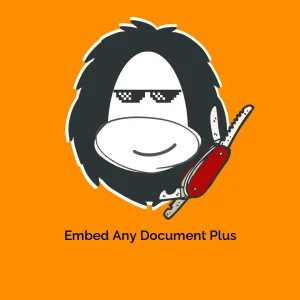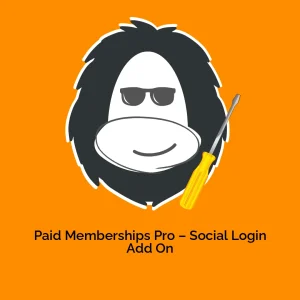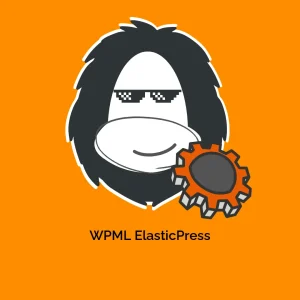Understanding Woo XML Facebook
In the evolving ecosystem of e-commerce, effectively managing your product data can significantly impact your business’s visibility and sales. One powerful tool that facilitates this process is the Woo XML Facebook integration. This feature is instrumental for businesses looking to export their product listings from WooCommerce to Facebook in a format that is usable and optimized for Facebook’s advertising and marketplace platforms.
The Importance of Woo XML Facebook Integration
Woo XML Facebook allows WooCommerce store owners to create XML feeds that contain essential product information. By utilizing this functionality, businesses can efficiently share their inventory with potential customers on Facebook, driving potential sales and expanding their reach. Let’s explore the essential aspects of this integration.
What is XML and Why Use It?
XML, or Extensible Markup Language, is a flexible way to create information formats and share both the format and the data on the World Wide Web, intranets, and elsewhere. It is designed to be self-descriptive, meaning that the structure and the data it contains are intended to be standardized across various platforms.
The use of XML feeds in e-commerce is particularly advantageous for a number of reasons:
- Consistency: XML provides a structured format that is consistent and understandable both for machines and humans.
- Portability: It allows for the easy sharing of data between different systems, such as your WooCommerce store and Facebook’s advertising platform.
- Scalability: As your product catalog expands, having an XML feed allows for easier updates and management of data.
Benefits of Exporting to Facebook
Using Woo XML Facebook to export product data gives you numerous advantages:
-
Improved Visibility on Social Media: Facebook has billions of users. By presenting your products there, you increase your chances of reaching a wider audience.
-
Enhanced Shopping Experience: When users see products on Facebook, they can easily interact with them, leading to better engagement and potentially higher conversion rates. This is vital in turning casual browsers into purchasers.
-
Easy Management: Managing product information across multiple platforms can be tedious and time-consuming. With Woo XML Facebook, your product updates sync seamlessly, cutting down on the repetitive manual work.
-
Targeted Marketing: By integrating with Facebook, you can leverage its powerful advertising tools to target specific demographics with your products. The ability to reach potential customers based on age, location, and interests will greatly enhance your marketing efficacy.
How to Create an XML Feed with Woo XML Facebook
Utilizing the Woo XML Facebook integration is relatively straightforward. Here are the key steps involved:
-
Install the Woo XML Facebook Plugin: The first step is to install and activate the Woo XML Facebook plugin from your WooCommerce dashboard.
-
Configure Plugin Settings: After activation, navigate to the plugin settings. Here, you will specify how you want your product data imported into Facebook, including essential details like product name, description, pricing, images, and stock levels.
-
Generate the XML Feed: Once you have configured your settings, you can generate the XML feed. This feed will now dynamically collect product data based on your WooCommerce inventory.
-
Submit the XML Feed to Facebook: After generating the XML feed, the next step is to submit it to Facebook using their product feed submission tool. This integration ensures your product listings are regularly updated, reflecting real-time inventory data.
Best Practices for Using Woo XML Facebook
To maximize the effectiveness of the Woo XML Facebook integration, consider implementing these best practices:
-
Regular Updates: Ensure that your XML feed is updated regularly. This will provide your customers with the most current product information and stock availability.
-
Optimized Product Descriptions: Craft engaging and keyword-rich product descriptions. This can enhance the visibility of your products not only on Facebook but also improve organic search rankings.
-
Quality Images: High-quality images can make a difference in increasing sales. Ensure that your XML feed includes attractive and clear product images.
-
Utilize Facebook’s Targeting Features: Leverage Facebook’s demographic targeting options to reach the right audience who are likely to be interested in your products.
-
Monitor Performance: Regularly check the performance of your product listings on Facebook. Use insights and reports to inform adjustments and improvements to your feeding strategy.
Overcoming Common Challenges with Woo XML Facebook
While the integration of Woo XML Facebook is beneficial, store owners may encounter common challenges. Understanding these can help you devise strategies to mitigate them.
-
Feed Formatting Issues: Occasionally, discrepancies in the XML feed format may lead to errors on Facebook. Ensure that the settings are correctly configured, and consider testing the feed with a small set of products first.
-
Product Variations: Handling product variations (like size or color) can complicate your feed. Using item-level attributes in your XML format can help manage these variations better.
-
Inventory Management: If your WooCommerce store experiences high inventory turnover, ensure that the feed is updated regularly to prevent showcasing out-of-stock items.
Future Trends in E-commerce and Social Media Integration
The landscape of e-commerce is rapidly changing, with social media platforms becoming increasingly vital in marketing strategies. Here are some future trends to keep an eye on:
-
Increased Social Shopping: More consumers are conducting shopping directly through social media channels. Integrating e-commerce tools like Woo XML Facebook will allow you to capitalize on this trend.
-
Augmented Reality (AR): Expect platforms like Facebook to start offering AR features that enable users to virtually try products. Integrating such features into your WooCommerce can elevate customer engagement.
-
AI and Machine Learning: The use of AI for personalized marketing will become more prevalent. Integrating these technologies with your XML feeds could enhance customer targeting and ultimately improve shopping experiences.
-
Privacy and Data Security: With increasing awareness around data privacy, e-commerce platforms must ensure they handle user data responsibly. Complying with regulations will become paramount in maintaining customer trust.
The integration of Woo XML Facebook is not just a matter of convenience; it’s a significant strategic advantage in today’s competitive market. By adopting this powerful tool, you can enhance your visibility, streamline your inventory management, and ultimately drive sales. Embracing this approach ensures you remain competitive in an ever-evolving digital landscape, connecting with customers where they spend much of their time—on social media.
Woo XML Facebook: Download for Free on OrangoGPL
That’s right, is entirely possible and legitimate.
Truly, even downloading a cracked Woo XML Facebook is law-abiding, as the license it is distributed under is the GPL, and this license permits its free modification, distribution, and resale.
So, there’s no reason to worry: If you were in search of to buy Woo XML Facebook cheaply or, directly, to download Woo XML Facebook Plugins nulled and, so, have it one hundred percent free, on OrangoGPL, you can do it without going outside the law.
Woo XML Facebook GPL: The only choice for entrepreneurs at the start of their journey
Call it what you like best: Discounts for Woo XML Facebook, download Woo XML Facebook Plugins GPL, download Woo XML Facebook without license or download Woo XML Facebook nulled.
It is absolutely legitimate and a necessity for any beginner entrepreneur.





Reviews
There are no reviews yet.